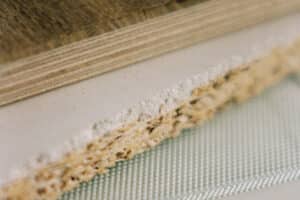As a designer, I believe that colour does more than make a home beautiful, it shapes how we live in it. The right palette has the power to ground a space, connect it to its surroundings and reflect the personality of those who call it home.
Our Studio’s approach to colour is rooted in sustainability, sensitivity to place and longevity. Homes in the Southwest are blessed with a rich natural palette, sun-warmed stone, coastal light, weathered timber and soft greenery. Our work is about translating those hues into something deeply personal, timeless and enduring.
Here’s how we work with you to develop colour palettes that feel effortless, curated and are designed to last.
1. Begin with your home’s unique story
Every home tells a story. Whether it’s a period property with a layered history or a new build shaped by its landscape, we begin by exploring its context – the architecture, the light and even the local materials. These elements often guide us toward colours that feel both natural and authentic. When your palette has a sense of place, it will never feel out of with its surroundings.
2. Honour what already exists
Working sustainably means making the most of what’s there. Original stone, timber beams or clay tiles aren’t just background details; they’re the soul of the building. Rather than covering them up, we design palettes that complement or gently contrast with these textures. This approach not only creates harmony but also reduces waste and preserves the craftsmanship that gives your home its character.
3. Consider light and rhythm
Homes evolve throughout the day, from soft morning light to golden evenings – and colour shifts with it. When developing a palette, we spend time in the space at different times of day, studying how natural and artificial light interact. The goal is to create rooms that feel calm and balanced in all conditions, with tones that adapt gracefully to the changing light.
4. Choose longevity over trends
Colour trends come and go, but your home should never feel dated. We avoid fleeting ‘it’ shades in favour of palettes that stand the test of time, rooted in natural pigments, balanced tones and emotional warmth. It’s a more sustainable way to design, ensuring your home remains elegant and relevant for years to come.
5. Balance tone as much as colour
A successful palette isn’t about matching shades – it’s about creating depth and contrast. We look carefully at tonal balance – layering light, mid and dark hues to add rhythm and dimension. This gives a home texture and presence, ensuring each room feels alive rather than flat.
My biggest joy is working closely with a client to really understand their aspirations, dreams and preferences. After meeting you and visiting your home, our palette development process with clients always begins with a thoughtfully curated mood board and material selection. This stage is where ideas take visual form; where colours, textures and imagery begin to tell the story of the space. Key visuals play a pivotal role, sparking conversation and helping uncover what the client is drawn to – or wants to avoid. Equally important are the physical swatches and material samples. These tangible elements allow clients not only to visualise the design direction, but also to connect with the tactile nature and properties of a material.
Ultimately, a home’s colour palette is as much about feeling as it is about design. When chosen with intention, rooted in place, guided by light and respectful of what already exists, colour becomes a quiet thread that ties your home’s story together.
Note about the author: Eden Parnell joined Sibley Grove in 2023, having graduated from Arts University Plymouth. She has recently been shortlisted for the Brit List ‘Rising Star’ award, which will be announced in November 2025.





